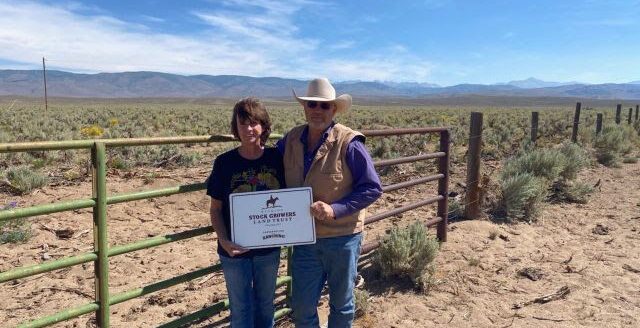NMSU contributes to reforestation study urging US to ramp up tree production

In order to realize the full potential of reforestation in the United States, the nation’s tree nurseries need to increase seedling production by an additional 1.7 billion each year, a 2.4-fold increase over current nursery production.
These numbers, taken from a new study co-authored by a New Mexico State University researcher and 17 other scientists from across the U.S., show the promise of increased nursery output as a way to fight climate change, create jobs, and recover from uncharacteristically severe wildfires.
With more than 200,000 square miles in the U.S. suitable for reforestation, ramping up nursery production could offer big benefits for the climate. Restoring forests is an important nature-based solution to climate change and a compliment to the critical work of reducing fossil fuel emissions.
“To meet the need for reforestation, we’ll need to invest in more trees, more nurseries, more seed collection, and a bigger workforce,” said the study’s lead author, Joe Fargione of The Nature Conservancy. “In return we’ll get carbon storage, clean water, clean air and habitat for wildlife.”
NMSU plays a critical role in reforestation efforts through research currently underway at the John T. Harrington Forestry Research Center at Mora. Owen Burney, associate professor and superintendent of the forestry research center, contributed to the new study, published by the science journal Frontiers in Forests and Global Change.
“We are at a pivotal moment in time where we can make a huge impact on the battle against climate change. Sadly, the greatest tool we have to fight this battle is incomplete,” Burney said. “Therefore, it is critical that we invest in the entire reforestation pipeline to address the urgency and scale of the climate problem while simultaneously supporting water resources, forest products, wildlife habitat, recreation, and many other valuable resources forests provide.”
To illustrate the requirements for increasing reforestation capacity in the U.S., the researchers identified 64 million acres of natural and agricultural lands, approximately 50 percent of the total reforestation opportunity. Accounting for different planting densities by region, it would require 30 billion trees to reforest these lands. This equates to 1.7 billion more tree seedlings produced each year for this land to be reforested by 2040.
To achieve this large increase, investment is required across the entire reforestation “pipeline.” Additional investment would be needed to expand capacity for seed collection and storage, tree nursery expansion, workforce development, and improvements in pre- and post-planting practices. The investments will create jobs in rural communities, not only in nurseries but across the whole spectrum of reforestation activities.
There are several existing reforestation programs in the U.S. that could be scaled up to put the new study’s information to work. On public lands this includes the Reforestation Trust Fund, which can be enhanced via the soon-to-be-introduced federal REPLANT Act to fully fund reforestation of America’s national forests. On private lands, they include the U.S. Department of Agriculture’s Environmental Quality Incentives Program and Conservation Reserve Program, as well as state conservation agency cost-share programs.
In New Mexico, Senate Bill 180 is currently making its way through the New Mexico Legislature. The bill is designed to create a joint agreement between the Forestry Division of the Energy, Minerals and Natural Resources Department and will include the Agricultural Experiment Station at New Mexico State University, the UNM Department of Biology and the Department of Forestry at New Mexico Highlands University to create the "New Mexico Reforestation Center.”
The goal of the New Mexico Reforestation Center is to address the impacts of climate change on the state’s forests and meet the state’s current and future reforestation needs through the establishment of a seed bank program, a nursery program and a planting program. The bill will help position New Mexico as a regional leader in meeting the private and public land reforestation needs of the southwestern U.S.
“Wildfires and insect outbreaks are being exacerbated by climate change and natural tree regeneration is being limited by the size of these disturbances,” said Matthew Hurteau, associate professor in the Department of Biology at UNM. “Planting is the only way we will reestablish forest cover in many of these areas and our lack of national nursery capacity is going to create a real bottleneck in seedling supply.”


